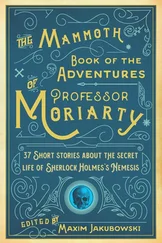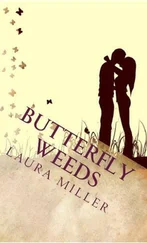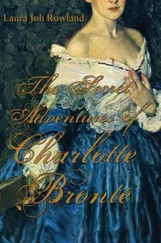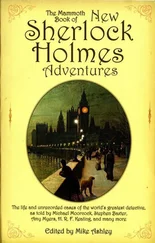Most of us recognize a fully formed story when we hear or read or see it; this, to me, seems almost as universal as our ability to distinguish, in our own language, between a grammatically correct sentence — “John watched the dog chase the ball” — and a grammatically broken one — “The chase John ball watched the dog.” But, as Chomsky famously pointed out, a sentence can be grammatically correct but still nonsensical: his example was “Colorless green ideas sleep furiously.” Even a story with the requisite components of beginning, middle, and end can seem essentially meaningless.
Lewis suspected that, at base, story is difficult to analyze because it really can’t be taken apart, and myth was the prime example of story’s deep roots in the human mind. To Lewis, the word “myth” meant something more than just a tale from an obsolete religion; it was a unit of meaning. Sometimes it was only a sketch of a narrative; a myth might be no more than the image of a beautiful youth falling in love with his own reflection in a pond. Not all old stories qualified as myth in his opinion, and some new ones did. You could identify them not so much by their common characteristics as by how people responded to them.
Lewis considered Franz Kafka to be one modern genius in the creation of myth; reading The Trial and The Castle, he felt “a profound significance, but it emanates from the whole story and is not built up by understanding the parts, nor could I state it except by retelling the story.” There was something irreducible in the kind of story he called myth. We might come up with a thousand explanations for what it “stands for,” but none of them will ever be complete or sufficient. It’s impossible to say what the myth of Orpheus is about; it is exactly itself. The only way to convey its significance fully is to tell the story one more time. We might claim that the ordeals of Kafka’s K. symbolize the individual’s struggle against the modern state or some such theme, but we know that’s only one facet of its significance. When hassling with some red-tape nightmare, we call it Kafkaesque, not because Kafka wrote about bureaucracy but because bureaucracy often seems to be about Kafka’s myth.
Myth troubles critics, Lewis believed, because its value is “extra-literary.” The power of a myth doesn’t arise from the particular words used to convey it; it can be felt even when no words at all are used. A myth might be told in pantomime, silent film, or a “pictorial series” (such as a comic book) and still impress its audience with the sensation that “something of great moment has been communicated to us.” There is only one version of, say, Madame Bovary or Keats’s “Ode on Melancholy”; it would make no sense to talk of an equally legitimate version of either work that used different words. But what is the definitive version of the Orpheus myth? Aren’t each of the renditions — Ovid’s verse, Monteverdi’s opera, the film Black Orpheus, Tennessee Williams’s play Orpheus Descending — equally valid and recognizably Orpheus? Although lyric poetry sometimes avails itself of mythic material, it is in a sense the opposite of myth, because “in poetry the words are the body and the ‘theme’ or ‘content’ is the soul. But in myth the imagined events are the body and something inexpressible is the soul; the words, or mime, or film, or pictorial series are not even clothes.”
This conception of myth comes in part from Owen Barfield, one of Lewis’s closest friends and a fellow Inkling; The Lion, the Witch and the Wardrobe is dedicated to Barfield’s daughter, Lucy, and The Allegory of Love is dedicated to Barfield himself. In 1928, Barfield published a book, Poetic Diction, based on his Oxford B.Litt. thesis, and it had an influence on both Lewis and Tolkien. Barfield suggested that myth is a remnant of an early stage of both language and understanding or consciousness, a time of “unitary, concrete meanings.” At this stage, for example, the story of Demeter and Persephone was not just associated with the experience of winter, it contained the very idea of winter — along with the concepts of waking and sleeping and life and death, among other things — in a single, dense unit of meaning. Such meanings, according to Barfield, “could not be known, but only experienced or lived.”
Very small children often think in this way, Barfield believed. When Desmond was just beginning to learn the names of people, I asked him to tell me who I was. He studied me for a while, and replied tentatively, “Mommy?” He knew I was not his mother, but because I sometimes cared for him, I was subsumed in the concept of Mommy-ness, along with the mother animals pictured in his board books and, possibly, physical warmth and food — the experience of being cared for itself. All of this was “Mommy.” Perhaps he regarded me as a minor manifestation of his own mother in the way the Romans considered the Celtic goddess Sulis to be one of the lesser faces that their goddess Minerva presented to the backward provincials of the world.
As languages develop, Barfield speculated, they begin to divide these larger units of meaning into smaller parts. This makes language more modular, and therefore easier to manipulate and more useful, but it also saps the intensity out of individual words and concepts. When, for Desmond, I became Laura, I was easier to think about as a distinct person who looked and behaved differently from the distinct person who is his mother, Leslie. But in becoming an individual, I also lost my place as part of the wondrous continuum of nurturing presence that was “Mommy.” Desmond knows that I am like his mother because we’re both female grown-ups, but that category does not have the potency it once did; it is disenchanted. Now I am my own woman, but I used to be a goddess.
When human beings learn to generalize and abstract, to label oaks, elms, and birches as “trees,” for example, they arrive at a new type of unity that is practical and sterile, in Barfield’s eyes — very different from the kind of consciousness that understood the world to be an ash tree or an oak to be a god. Barfield believed that in metaphor in particular and in poetry in general, we recover a little of the old, lost unity; metaphor rejoins what has been split apart. This is the source of the sensation of illumination, of recognition that a powerful metaphor delivers. For, as much as our minds like to analyze, to break things down into their constituent parts in order to examine and manipulate them, we also long for synthesis, the sensation that our words and our world are connected and infused with “intrinsic life.” It is in myths that we find that life, that meaning, in its most intact form (although even here it is “mummified,” according to Barfield). Myth defies intellect — if by “intellect” we mean analytical, logical thought — because it predates it. An echo of this old, preanalytical unity is the “something inexpressible” that Lewis felt myth imparts.
Lewis read omnivorously and had ecumenical tastes, but fiction that conveyed this “something” had always been and always would be his favorite. A pulp novelist like H. Rider Haggard, he thought, exemplified the “mythopoetic” (mythmaking) art in isolation from all other literary gifts. A book didn’t always have to be good in any sense that matters to literary critics — in its prose, its construction of believable characters, its ideas, or its originality — to pack a mythopoetic wallop. Lewis knew that Haggard wasn’t a very good writer, but he also knew that he felt strangely swayed and captivated by books like She and King Solomon’s Mines. In Haggard, it was made apparent how the “daemon,” or mythopoetic genius, “triumphs over all obstacles and makes us tolerate all faults. It is quite unaffected by any foolish notions which the author himself, after the daemon has left him, may entertain about his own myths. He knows no more about them than any other man.”
Читать дальше












